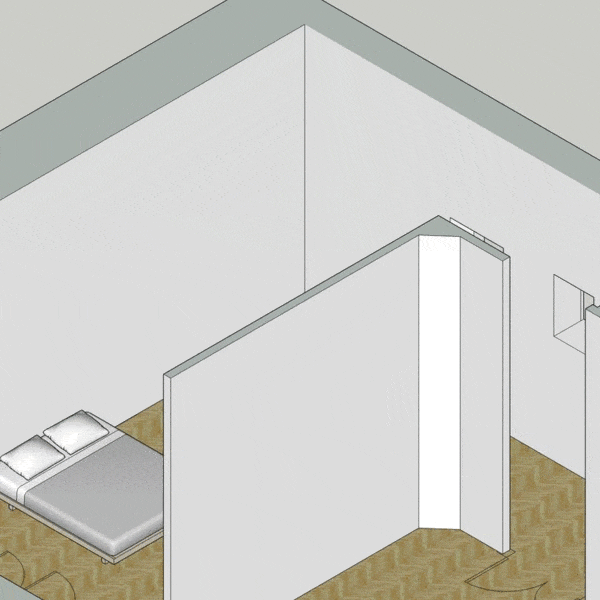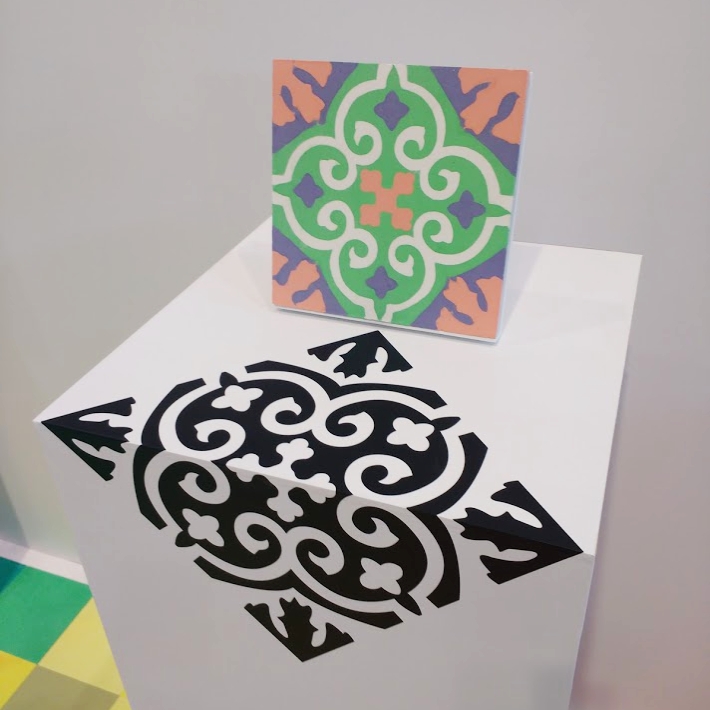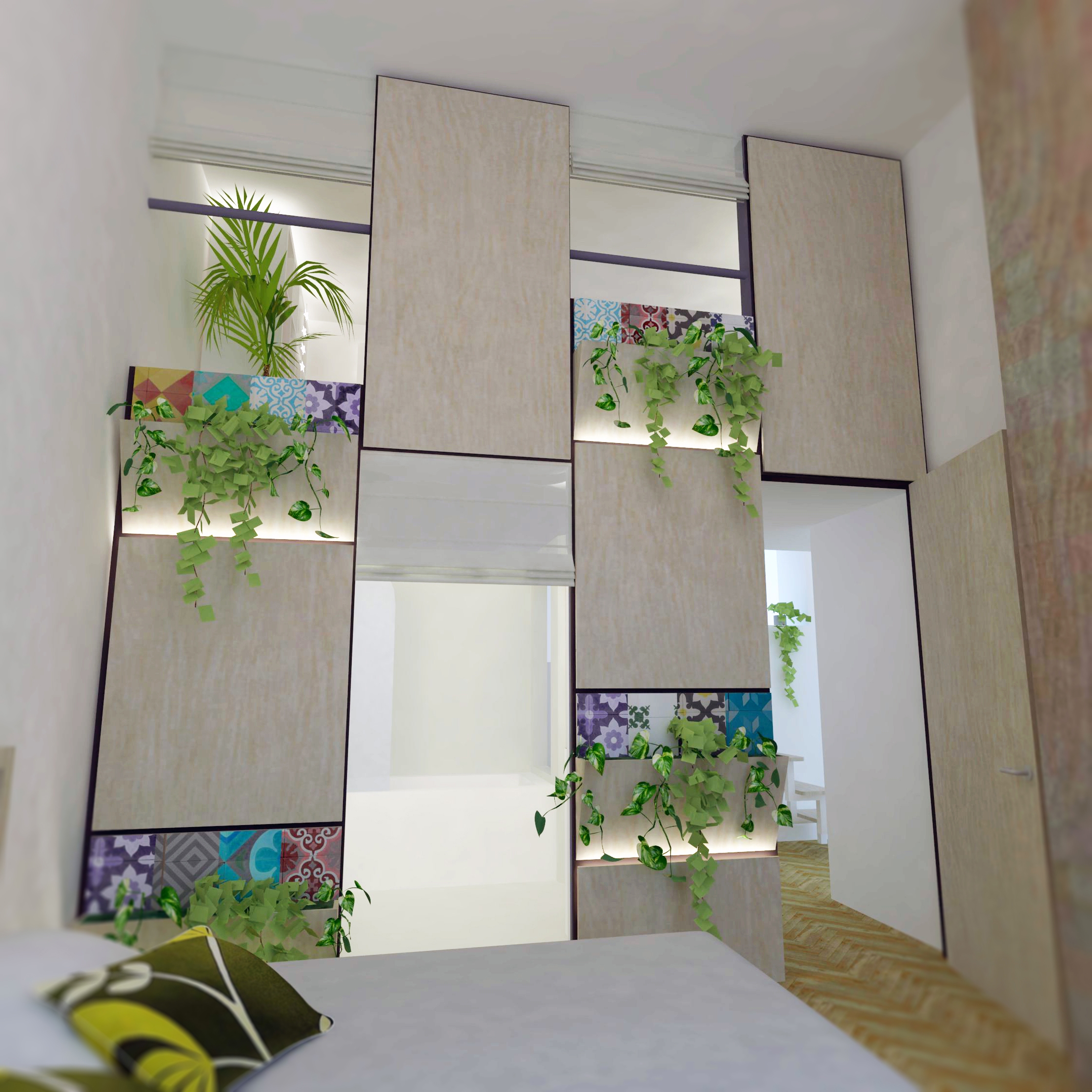Living wall & mezzanine at Rose Hill
Reorient designed a mezzanine bedroom with a living wall, for a one bedroom apartment in 2017. Making use of the empty space above a bathroom, our design delivers a new double bedroom with plenty of storage, a small wardrobe and a verdant green wall. Wall openings connect the existing bedroom to the mezzanine to allow natural daylight to enter and for passive cross-ventilation of this new space.

Moors, Ottomans & Magyars
The flat was located in the Rószadomb (Rose Hill) district in Budapest; a region where many Ottomans lived during the period when the Ottoman Empire occupied Budapest (1541-1699). Still here today and recently refurbished is the Tomb of Gül Baba, the Bektash dervish, poet and right hand man of Suleiman the Magnificent. It is said the Ottoman inhabitants grew so many roses that this area eventually became known as Rose Hill. The themes of growing plants and islamic decor both inspired this project.
Interestingly it was our client who requested we use Andalusian tiles in the design. Andalucia refers to ‘Al Andalus’, the part of the Moorish empire which encompasses most of modern day Spain. Both Moors (in Spain) and Ottomans (in Hungary) were linked by shared Islamic faith, culture & design. Being asked to use these tiles here seemed both serendipitous and appropriate in this historically Islamic part of Budapest. The tiles are typically 20cm squares or hexagons of brightly coloured geometric designs generated from Islamic tessellation drawing techniques. Many of the designs incorporate tendril and foliage motifs commonly found in arabesques. With numerous reflections, symmetries and rotations, these patterns can extend indefinitely and thus suggest infinity.


Hydraulic Cement Tiles
We looked for suppliers and found a local cement tile supplier & factory in Csepel, Hungary, who we met at the HUNGEXPO interior design trade show in Budapest. They produce many different tiles with a mixture of Moorish, Ottoman and Hungarian influenced design motifs, all presented in contemporary colours. Pigmented liquid cement aggregates are put under pressure and compressed to an artificial stone, which is then left to cure. These are often called ‘Hydraulic cement tiles’ as they are made using hydraulic cement, which hardens in the presence of water. Not to be confused with ‘encaustic tiles’; made from clay and requiring firing to harden.
In our design we use these cement tiles mostly decoratively. We found that mixing different tile patterns and colours creates a light, informal and playful spirit. The tiles have been located above the planter tray to offer splash protection to the wall when watering the plants.

Designing a Living Wall
Designing this living wall we took a similar approach to designing a building facade. First we designed a system of smaller decorative & functional parts. This included a row of colourful tiles, a planting tray for the house plants, a LED grow light, roman blinds and natural timber panels. Then we patterned these parts across the wall, leaving gaps for the doors, a frosted glass wall to the bathroom and openings to the mezzanine space above. Finally we added heavy & thick roman blinds for dividing the spaces. These blinds will block out noise & light but still allow for some cross ventilation of air in the mezzanine space.
Function of Decor & Plants
When we drew this design we followed NASA’s research about plants ability to passively clean air. Dr. B Wolverton suggests the use of 50 common house plants to remove volatile organic compounds (VOCs) pollutants from the air. More recent research from 2019 debunks NASA’s research from the 80s, and state that actually thousand of plants would be needed to produce any significant filtering effect! Lucky for houseplants they are still beautiful, calming and wonderful for our psychological well being! So they are definitely doing something helpful for us, even if we don’t know exactly how yet. Keep using them liberally in your designs!

Get in touch!
We hope you like our design approach. To find out more or discuss your project, contact us here!



No Comments